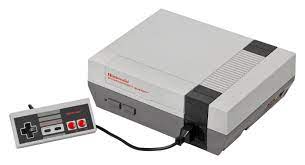How Can I Find A Walmart Location Near Me In US

Are you trying to locate the nearest Walmart store in your area? With over 4,000 stores across the United States, finding one nearby shouldn’t be too difficult. But with so many options available, it can be overwhelming to figure out which location is closest and most convenient for you. Fortunately, there are several ways to find a Walmart near you that are quick and easy. In this blog post, we’ll explore different methods for locating Walmart stores in your area so that you can shop at America’s favorite discount store without any hassle!
Walmart’s Official Store Finder
Walmart’s official store finder is a useful tool for those looking to find the nearest Walmart location. The store finder can be accessed through the Walmart website or mobile app, and provides users with a simple search function that allows them to enter their zip code or city and state.
Once entered, the store finder will display a map of nearby stores along with information about each location such as address, phone number, hours of operation, and services provided. This can be particularly helpful when trying to determine which Walmart is closest or most convenient for your needs.
In addition to providing basic information about each store, the official store finder also offers additional features such as allowing users to filter results by various criteria including pharmacy availability, grocery options, and pickup services. This makes it easy for shoppers to find exactly what they need at their preferred Walmart location.
Walmart’s official store finder is an essential resource for anyone shopping at Walmart in the US. Its user-friendly interface and comprehensive listing of all available stores make it quick and easy to locate your nearest Walmart no matter where you are located in the country.
Third-Party Store Locators
Aside from Walmart’s official store locator, there are also third-party websites and apps that can help you find the nearest Walmart location. These online tools offer a different search experience with added features such as user reviews, maps of nearby attractions, and even real-time traffic updates.
One popular third-party store locator is Yelp. Known for its restaurant reviews, Yelp also has a comprehensive directory of retail stores including Walmart. Simply type in “Walmart” on the search bar along with your location or zip code to get started.
Another option is MapMyNearest which provides a list of Walmarts based on your current GPS location or manually entered address. This website not only shows you where the stores are but also gives you information about their hours of operation and phone numbers.
If you prefer using mobile apps, then try out AroundMe which helps users discover local businesses including Walmart stores near them. The app uses augmented reality to display markers over nearby businesses so that you can easily navigate to them while on foot.
Using these third-party store locators can be helpful in finding the closest Walmart locations especially if you want additional information beyond basic directions like customer feedback and crowd levels.
How to Find a Walmart Using Google Maps
Google Maps is a great tool for finding Walmart locations near you. To get started, simply open the Google Maps app or website and type “Walmart” into the search bar. You can also use voice commands on your mobile device to search for Walmart by saying “Hey Google, find me a Walmart near me.”
Once you have entered your search query, Google Maps will display all of the nearby Walmart locations on the map. You can click on each location to view additional details such as store hours, phone number, customer reviews and even photos.
If you want to narrow down your search results further based on specific criteria such as distance or store features like pharmacy or photo center services offered at that particular location then use filters option available in google maps.
Another helpful feature of Google Maps is its real-time traffic updates which show how long it will take you to reach each Walmart location based on current road conditions. This can be especially useful during rush hour when traffic congestion tends to be at its worst.
In short, using Google Maps is an excellent way to quickly and easily locate nearby Walmart stores with just a few taps or clicks.
How to Find a Walmart Using Apple Maps
If you are an Apple user, finding a Walmart location near you is just as easy. Like Google Maps, the built-in Apple Maps app also provides accurate directions to any Walmart store in the US.
To find a Walmart using Apple Maps, open the app on your iPhone or iPad and type “Walmart” into the search bar at the top of your screen. Alternatively, you can use Siri to locate nearby Walmarts by saying something like “Hey Siri, where’s the nearest Walmart?”
Once you have located a nearby Walmart on Apple Maps, tap on its icon to view more details such as address and phone number. You can even get step-by-step directions from your current location directly within the app.
Apple Maps also allows users to save frequently visited locations as favorites for quick access later. So if there’s a specific Walmart that you visit often, be sure to save it as a favorite for added convenience.
Finding a Walmart location using Apple Maps is simple and straightforward for all iOS users.
How to Find a Walmart Using MapQuest
MapQuest is a reliable online mapping service that can help you locate the nearest Walmart store in your area. Here are the steps to follow:
1. Go to mapquest.com and enter “Walmart” in the search bar.
2. Click on “Search” and allow MapQuest to access your location.
3. A list of nearby Walmart stores will appear, along with their addresses and phone numbers.
4. You can click on each store’s name for more information, such as hours of operation and services offered.
One advantage of using MapQuest is that it provides detailed driving directions from your current location to the selected Walmart store. You can also customize your route by selecting different transportation modes or avoiding tolls.
Another useful feature of MapQuest is its ability to display real-time traffic conditions, helping you avoid congested areas during peak hours.
If you prefer using MapQuest over Google Maps or Apple Maps, finding a Walmart near you shouldn’t be a problem at all!
Conclusion
Finding a Walmart location near you in the US is easier than ever. With Walmart’s official store finder, third-party store locators like Yelp and Yellow Pages, and map services like Google Maps, Apple Maps and MapQuest at your fingertips, you can quickly find the closest Walmart to your current location.
Whether you need to run some errands or do some shopping at your nearest Walmart store, these tools will help you get there with ease. So next time you’re wondering “Where is the nearest Walmart near me?”, just remember that there are plenty of ways to locate one quickly and easily. Happy shopping!



